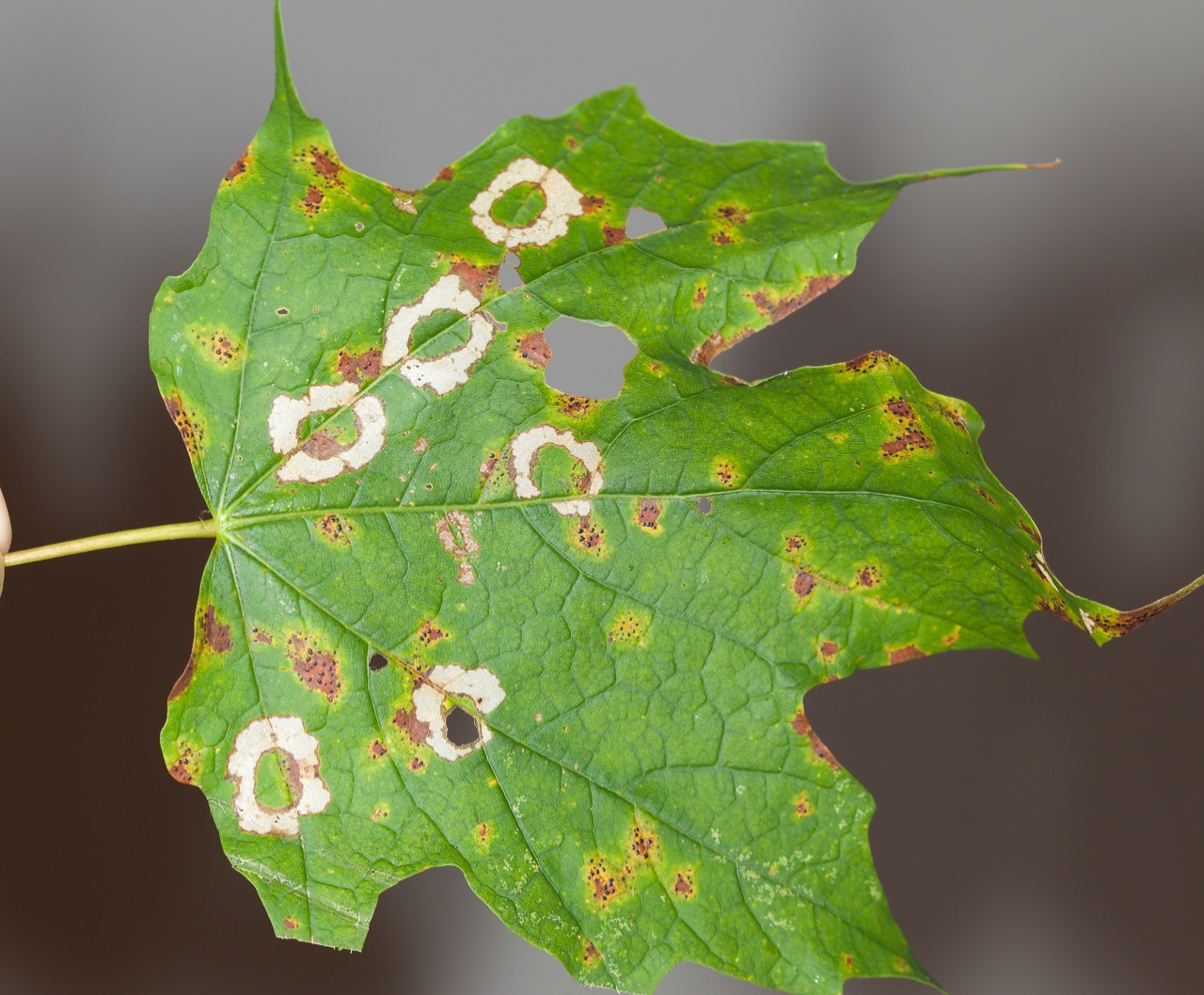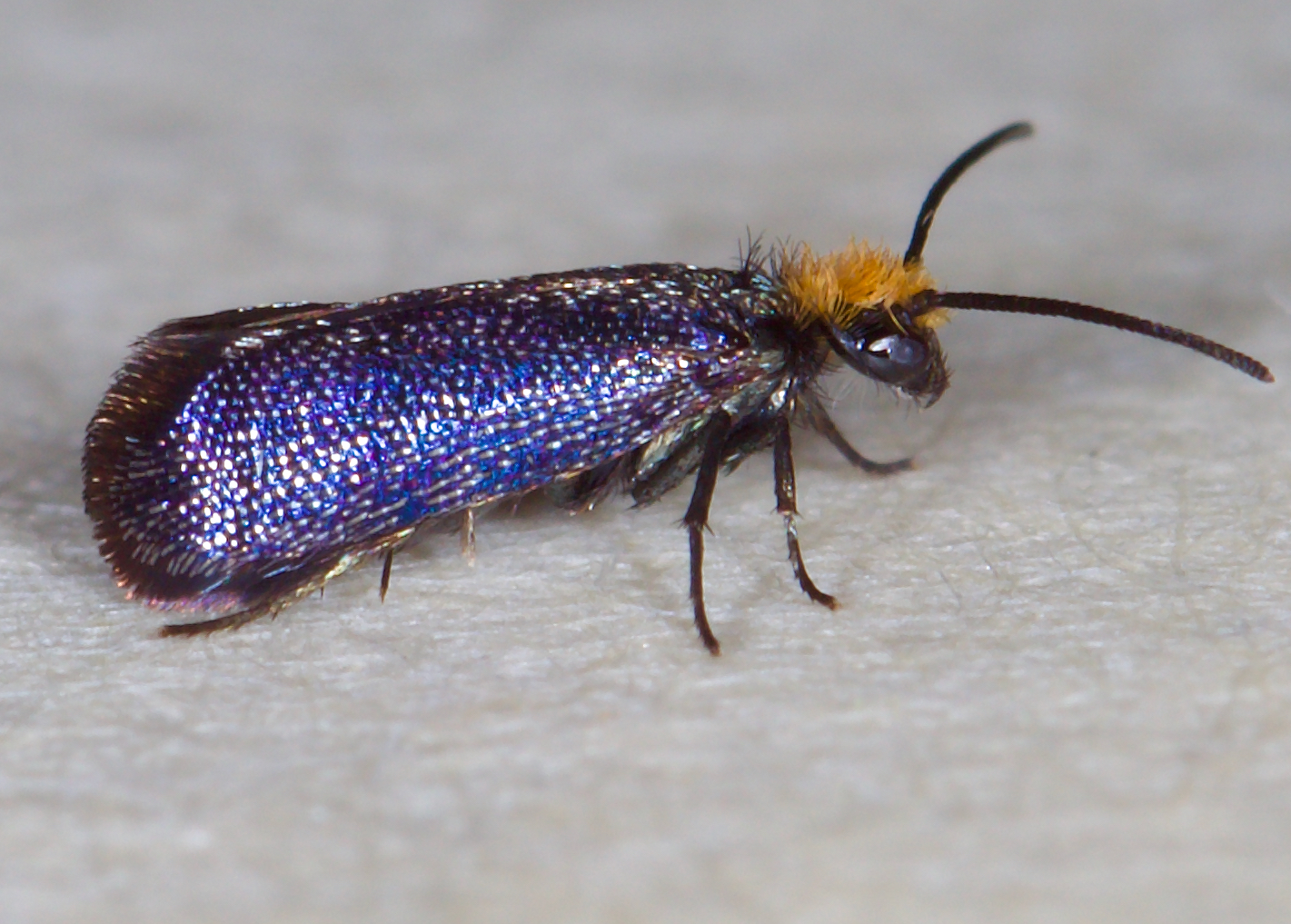Possibly
Paraclemensia acerifoliella, the Maple Leafcutter Moth
.
The larvae cut out a circular "tent" on the leaf, and then move around to feed, skeletonizing circular spots as they remain covered, undoubtedly for protection from predation.
https://en.wikipedia.org/wiki/Paraclemensia_acerifoliella
"The larvae feed on the leaves of
Acer and sometimes also
Fagus,
Quercus,
Betula and
huckleberry species. Older larvae cut two circular portions of a leaf and bind them together as a portable case. They have a brownish thorax, black head and translucent whitish abdomen. Larvae can be found from June to September. The species overwinters in the pupal stage on the ground inside the portable case. "
From another source:
"The maple leafcutter spends most of its life on or surrounded by a maple leaf. From spring through summer, when it feeds and grows, a leafcutter chews two discs of maple – each no bigger than the diameter of a pea – and fastens them together with silk so they will serve as a protective casing. It’s a bit like a pita bread with a caterpillar inside, or, better yet, a turtle with two shells. The casing is formally known as a habitaculum.
A habitaculum is not a bad hideout from warblers and other songbirds hunting the trees for a squishy meal. It allows the caterpillar to feed on the remaining maple leaf without being so obvious to predators. In fact, as the caterpillar grows, it adds larger discs of leaf to its habitaculum. These discs aren’t particularly big, because, fully grown, a leafcutter caterpillar is only about one-fifth of an inch long.
That was a good test! I've never seen or heard of this little bug. Fortunately, I'm not bad at figuring these things out. They seem to be more prevalent in your area.
The only distribution map I've found is from a moth photographer's website:

I would guess they can be found anywhere sugar maples are a prevalent tree species. Canada has a webpage dedicated to this relatively harmless pest.
https://tidcf.nrcan.gc.ca/en/insects/factsheet/9365
They suggest burning the leaves in the fall to prevent or reduce re-infestation.












